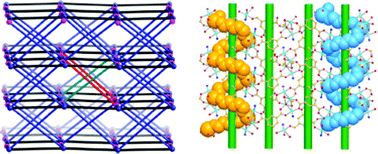Copper(ii) 5-methoxyisophthalate coordination polymers incorporating dipyridyl co-ligands: syntheses, crystal structures, and magnetic properties†
Abstract

* Corresponding authors
a
College of Chemistry and Chemical Engineering, Luoyang Normal University, Luoyang, P. R. China
E-mail:
wlya@lynu.edu.cn
Fax: +86-379-65511205
b Key Laboratory of Synthetic and Natural Functional Molecule Chemistry of Ministry of Education, Department of Chemistry, Northwest University, Xi'an, P. R. China
c
College of Chemistry and Life Science, Tianjin Key Laboratory of Structure and Performance for Functional Molecule, Tianjin Normal University, Tianjin, P. R. China
E-mail:
dumiao@public.tpt.tj.cn
Fax: +86-22-23766556

 Please wait while we load your content...
Something went wrong. Try again?
Please wait while we load your content...
Something went wrong. Try again?
L. Ma, B. Liu, L. Wang, C. Li and M. Du, Dalton Trans., 2010, 39, 2301 DOI: 10.1039/B920308G
To request permission to reproduce material from this article, please go to the Copyright Clearance Center request page.
If you are an author contributing to an RSC publication, you do not need to request permission provided correct acknowledgement is given.
If you are the author of this article, you do not need to request permission to reproduce figures and diagrams provided correct acknowledgement is given. If you want to reproduce the whole article in a third-party publication (excluding your thesis/dissertation for which permission is not required) please go to the Copyright Clearance Center request page.
Read more about how to correctly acknowledge RSC content.
 Fetching data from CrossRef.
Fetching data from CrossRef.
This may take some time to load.
Loading related content
